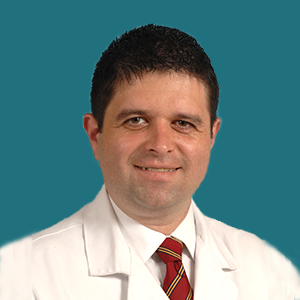SPEARHEAD-1 Supports Potential TCR-T Approval for Synovial Sarcoma
The Prescription Drug User Fee Act (PDUFA) target action date is August 4, 2024.
Afamitresgene autoleucel (afami-cel; Adaptimmune Therapeutics) is an investigational MAGE-A4–targeted autologous engineered T-cell receptor (TCR) SPEAR T-cell therapy intended to treat synovial sarcoma (SS) in HLA*02-positive patients.
The therapy is currently being reviewed by the FDA, which accepted Adaptimmune’s biologic license application (BLA) for the therapy in January 2024 after the company completed its rolling BLA submission in December 2023.1,2 The BLA was the first of its kind for an engineered T-cell therapy for a solid tumor indication submitted to the agency. The Prescription Drug User Fee Act (PDUFA) target action date is August 4, 2024.
Afami-cel is being evaluated in the pivotal SPEARHEAD-1 clinical trial (NCT04044768), which has met its primary efficacy endpoint of overall objective response (ORR) compared to natural history.3
John A. Charlson, MD

“This could be the first, to my knowledge, the first FDA approved TCR therapy for solid tumors - there's really very little affinity for CAR T-cells in solid tumors at this point, either. And so that's really exciting, soft tissue sarcoma is heterogeneous, with at least 50 subtypes of soft tissue sarcoma. So, treatment development for sarcoma is hard, and it's been relatively slow. So, this is super exciting to see this underserved population really take the first step and hopefully broaden out to other tumor types,” primary investigator John A. Charlson, MD, associate professor of medicine, Medical College of Wisconsin, told CGTLive.
READ MORE: Looking Forward to A Potential First Cell Therapy Approval for Sarcomas
Patients with SS in SPEARHEAD-1 had an 39% ORR and a median duration of response (DOR) of around 12 months. Recent data from the trial with updated positive survival data were presented at the American Society of Clinical Oncology (ASCO) 2023 Annual Meeting, held in Chicago, Illinois, in June, by investigator Brian Van Tine, MD, PhD, professor of medicine and pediatrics at Washington University in St. Louis.
The new data demonstrated that responders had a 1-year survival rate of 90% and a 2-year survival rate of 70%. The median overall survival (OS) rate overall was 17 months although the median OS has not yet been reached for responders. Comparatively, second-line treatment of advanced synovial sarcoma has historically yielded a median OS of under 12 months. The new data also included transient cases of cytokine release syndrome but no new, long-term safety signals.3
Brian Van Tine, MD, PhD

“We've learned that there's issues with cytokine release syndrome, which is why this has to be given impatient by people that know what they're doing. But compared to getting chemotherapy once every 3 weeks, it's much safer and much better tolerated in the long term. And so, we're really trying to spread the message that everybody should know their (HLA) status. I think as these become more prevalent, and the targets become more available, hopefully everybody will eventually have access to something like this," Van Tine told CGTLive.
Besides the primary endpoint of ORR, secondary endpoints included the safety and tolerability of ADP-A2M4 by assessing treatment-related adverse events (AEs) and serious AEs using CTCAE version 5.0 over 2.5 years. The safety assessment also involved measuring replication-competent retrovirus in genetically engineered T-cells through PCR-based assays in peripheral blood for 15 years and analyzing T-cell clonality and insertional oncogenesis in peripheral blood mononuclear cells for 2.5 years. Efficacy endpoints included determining the best OR per RECIST v1.1, assessing time to response, DOR, progression-free survival (PFS), and OS, with PFS and OS monitored for 2.5 years and 15 years, respectively. Quantitative measures of genetically engineered T-cells in PBMCs were taken by qPCR and flow cytometry, assessing both the amount and the time taken to achieve peak expansion of these cells over 2.5 years. Additionally, the development and validation of an in vitro diagnostic assay for screening MAGE-A4 antigen expression as a companion diagnostic were conducted over 2.5 years.
SPEARHEAD-1 enrolled participants between the ages of 16 and 75 years (10 years at selected sites) with a diagnosis of advanced SS or myxoid liposarcoma/myxoid round cell liposarcoma confirmed by cytogenetics. Participants had previously received an anthracycline or ifosfamide-containing regimen and had measurable disease according to RECIST v1.1 prior to lymphodepletion. They were HLA-A02:01, HLA-A02:02, HLA-A02:03, or HLA-A02:06 positive, and their tumors showed MAGE-A4 expression confirmed by a central laboratory. In North America, the tumor showed MAGE-A4 expression of ≥1+ staining in ≥10% of cells by immunohistochemistry. Participants had an ECOG Performance Status of 0 or 1, or a Lansky Score ≥60% for those aged 10 to 16 years old, and a left ventricular ejection fraction (LVEF) of ≥50%. Additional protocol-defined inclusion criteria also applied.
Exclusion criteria for the study included the presence of HLA-A*02:05 in either allele and prior or planned receipt of various therapies or treatments before leukapheresis or lymphodepleting chemotherapy, such as cytotoxic chemotherapy, tyrosine kinase inhibitors, immune therapy, anti-cancer vaccines, gene therapy using an integrating vector (except lentiviral vectors), corticosteroids, any immunosuppressive therapy, investigational treatments or participation in interventional clinical trials, allogeneic hematopoietic stem cell transplant, radiotherapy to the target lesions, and major surgery. Participants with a history of allergic reactions to compounds similar to fludarabine, cyclophosphamide, or other agents used in the study, autoimmune or immune-mediated diseases, symptomatic central nervous system metastases, prior malignancy not in complete remission, clinically significant cardiovascular disease, uncontrolled intercurrent illness, active infections with HIV, hepatitis B, hepatitis C, or human T cell leukemia virus, and those who were pregnant or breastfeeding were also excluded. Additional protocol-defined exclusion criteria applied.